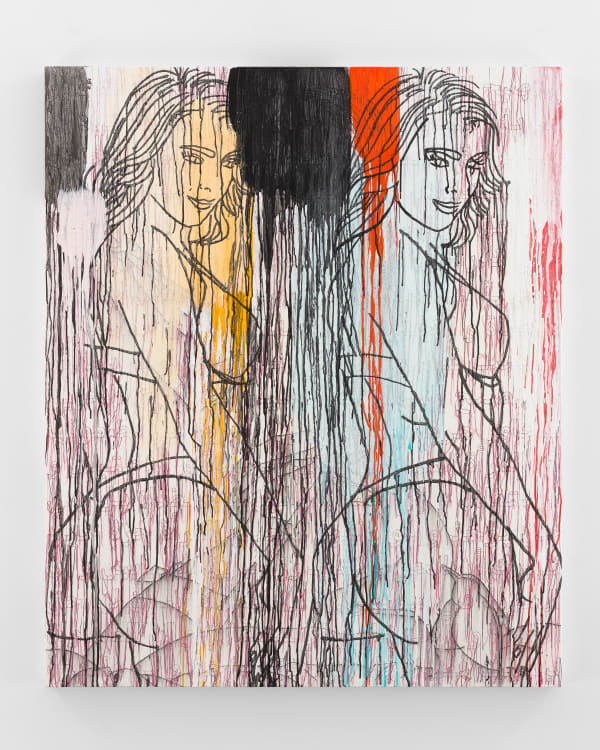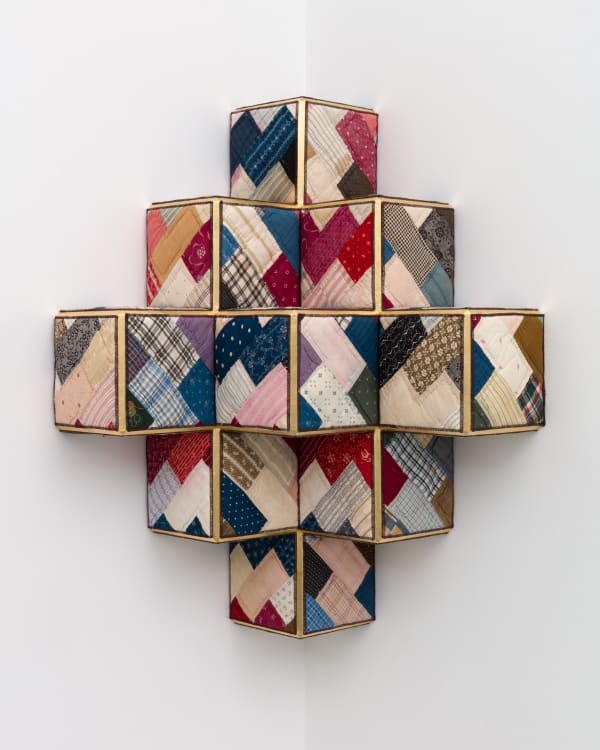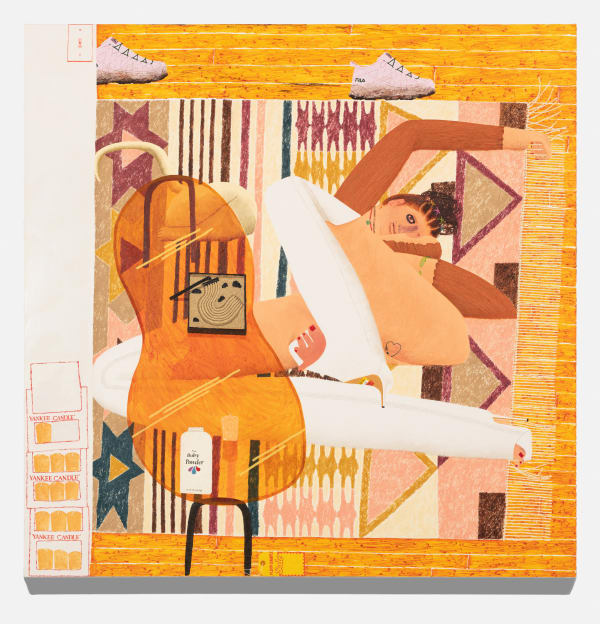For sales inquiries, please contact Senior Director Kelly Woods:
Marianne Boesky Gallery is pleased to present works by Ghada Amer, Jennifer Bartlett, Sanford Biggers, Pier Paolo Calzolari, Svenja Deininger, Suzanne McClelland, Danielle Mckinney, Donald Moffett, Celeste Rapone, and Hannah van Bart for the Galleries sector of Art Basel 2023. The gallery will also present McClelland's Mute for the Unlimited Sector of the fair.
Spanning mediums, movements, and generations, the artists included in the Galleries sector presentation speak to the generational and material diversity of the gallery's program. Linked by their engagement with contemporary political, social, formal, and material concerns, these nine artists are engaged in practices that seek to expand the possibilities of artistic production. Together, these works produce a dialogue that highlights—and complicates—their shared themes.
Ghada Amer and Pier Paolo Calzolari test the limits of established conventions of their chosen mediums. Embroidering figures into her paintings, Amer wrestles with the history of painting as a masculine medium. Painting on slabs of clay as if they are canvas, Amer captures female figures in moments of shared intimacy on large-scale ceramic sculptures. A pioneer of Arte Povera, Calzolari renders deeply hued, atmospheric compositions from the 1980s in egg tempera and tempera grassa. This embrace of historic, traditional materials and process exemplifies the artist's long-standing fascination with the alchemical and substantive elements of painting.
Through their paintings, Jennifer Bartlett and Suzanne McClelland reveal the lyricism and poetry embedded within linguistic and mathematical systems. Grounded in precise mathematical and geometric abstractions, Bartlett's works call into question the rigid—often self-imposed—constraints and restrictions of the grid, resulting in dynamic compositions with deep poetic and aesthetic resonance. In large-scale canvases, McClelland investigates painting's linguistic and acoustic dimensions while reflecting broader cultural and political concerns. Built from visual-as well as auditory-observations of the world, McClelland's abstractions underscore the ways in which language itself is gendered and politicized.
The paintings of Danielle Mckinney, Celeste Rapone, and Hannah van Bart probe ideas of spirituality, the self, and the soul, examining the personal through the figurative. Simultaneously cinematic and intimate, Mckinney's narrative paintings capture solitary female protagonists in moments of leisure and deep reflection. Painting with an acute awareness of the female gaze, employing deep, colorful hues and nuanced details, Mckinney revels in dreamlike interiors both spiritual and domestic. Layering autobiographical details, art historical references, and artifacts of daily life, Rapone's inventive figures contort impossibly within the confines of their canvases, testing boundaries between figuration and abstraction and the very geometries that underlie our lives. Inspired by the Dutch Golden Age, van Bart's atmospheric portraits, still lifes, and landscapes take subtle pleasure in the spiritual through subject and materiality.
Sanford Biggers and Donald Moffett employ inventive forms to examine social and political concerns. Working on and with antique quilts-versions of which, according to African American folkloric traditions, acted as coded signposts on the Underground Railroad—Sanford Biggers engages in creative intervention with his Codex works, drawing occluded histories and mythic narratives into the present moment and elucidating their ongoing relevance. In his newest body of work, Moffett uses the forms of nature to capture the urgency of ongoing environmental crises while expanding on the minimalist, abstracted visual language that he has cultivated throughout his career.
Diverse in form, material, and approach, these works produce a dialogue that highlights—and complicates—their shared themes, exemplifying the gallery's interest in forming narratives across backgrounds and mediums while speaking to the very nature of what it means to make art today.
In the Unlimited sector of the fair, Marianne Boesky Gallery presents Suzanne McClelland's Mute—a monumental collection of paintings that disassembles elemental components of language, effectively dissolving them into the unutterable. The twenty-six canvases—conceived to represent letters of the Latin alphabet—liberate language from its existential bind. Severing symbols from their function, Mute replaces the auditory with the visual, manifests an alternate alphabet that forecloses the possibilities of vocalization or articulation, and demands a new context in which to become legible. The characters are replaceable but interconnected, relying on one another to establish meaning. Engaging with notions of control and chance, the line-up of portrait-oriented works, formed by gravity, viscous pours, spills, and stains, references the process of comparison, recognition, and memory. Mute is a language that cannot be spoken or read, yet demands to be seen, felt, and understood as present.













